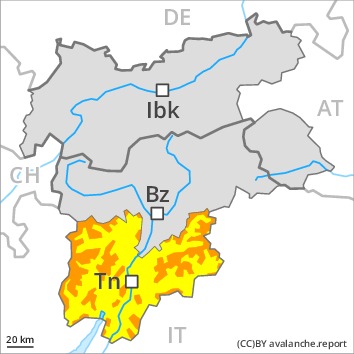
Danger level
 | 1600m
|
Avalanche Problem
 | | Persistent weak layer |
|  | |  |
 | | Persistent weak layer |
|  | |  |

Weak layers deep in the old snowpack necessitate caution. The conditions are sometimes unfavourable for backcountry touring and snowshoe hiking in steep terrain.
The new snow and wind slabs of last week must be evaluated with care and prudence above the tree line. Even single backcountry tourers can release avalanches in many places, including large ones. Individual medium-sized and, in isolated cases, large natural avalanches are further possible, caution is to be exercised on steep slopes also below the tree line, as well as at the base of rock walls and behind abrupt changes in the terrain.
Whumpfing sounds and the formation of shooting cracks when stepping on the snowpack are a clear indication of a weakly bonded snowpack. Remotely triggered avalanches are possible. In addition a latent danger of gliding avalanches exists. In the event of solar radiation this applies in particular on steep grassy slopes.
The current avalanche situation calls for extensive experience in the assessment of avalanche danger and careful route selection.
Snowpack
Towards its surface, the snowpack is fairly homogeneous; its surface consists of loosely bonded snow. In some places new snow and wind slabs are lying on surface hoar. The new snow and wind slabs of last week are bonding only slowly with the old snowpack in all aspects. Faceted weak layers exist in the centre of the snowpack in particular on shady slopes. Towards its base, the snowpack is well consolidated. The more recent wind slabs are covered with new snow and therefore barely recognisable.
Tendency
At elevated altitudes a precarious avalanche situation will still be encountered. As a consequence of low temperatures the snowpack can not consolidate.







